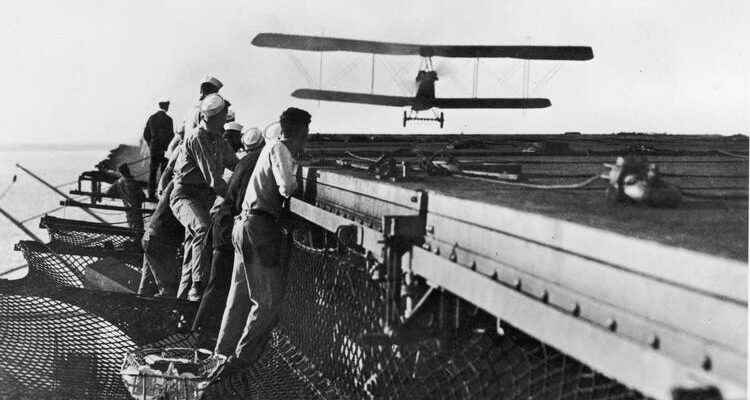No other weapon system embodies the military power of the USA as impressively as the aircraft carrier. Now, 100 years after the first launch of an aircraft from a US Navy carrier, questions are being asked about the future of the giants.
A photograph from October 1922 shows a landing being practiced on the aircraft carrier Langley.
It was the beginning of a new era, even if the event itself was undramatic. On October 17, 1922, Lieutenant Virgil Griffin took off in his Vought VE-7 Bluebird biplane from the wooden planking deck built over a World War I-era naval coal transport. This long, flat deck, resting on strong metal supports, soon became the naval term for an entire class of ships: Flattop.
Lieutenant Griffin launched from an entirely new type of warship that seemed exotic to experts. It had only a few smaller guns and was therefore in no way comparable to the battleships, which were considered the most powerful weapon in maritime warfare and whose possession the great powers committed to limit in an agreement that year. The new type of ship seemed unlikely to pose a threat to these steel giants. The former USS “Jupiter” was given a new name after the conversion. She was now the USS “Langley,” named for Samuel Langley, an early aviation pioneer. She was also given an entirely new type of identification number: CV-1. The American Navy had its first aircraft carrier.
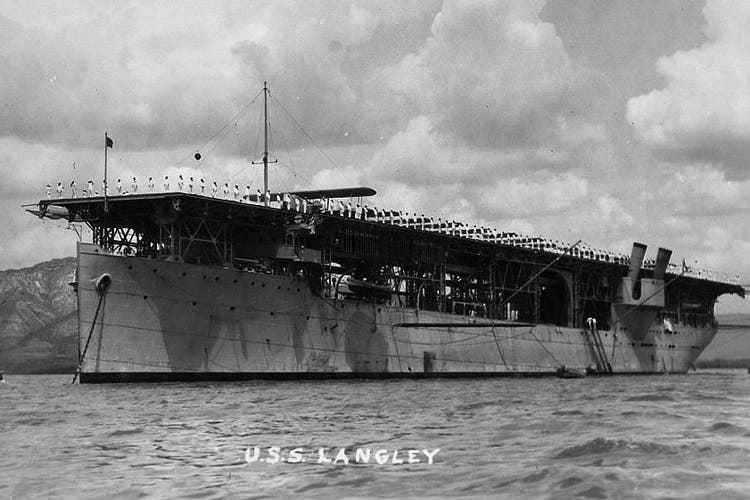
The «Langley» off Haiti in the spring of 1927. The first aircraft carrier was created by installing a landing pad on an existing transport ship.
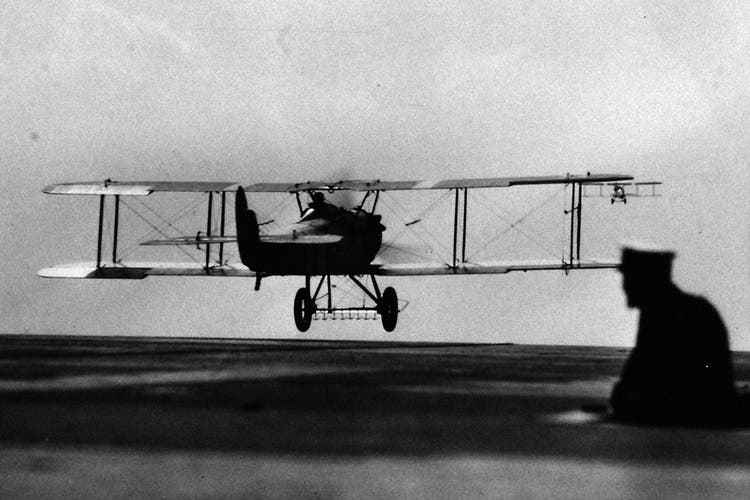
A VE-7 takes off from the aircraft carrier Langley in 1927. A biplane of this type had made its first launch five years previously.
One hundred years after the pioneer flight from the deck of the «Langley», which was followed nine days later by the first landing of an airplane on her deck, the count ends provisionally at 78. With the hull number CVN-78, the carrier «Gerald R. Ford» is at that time Scene in Norfolk – now the largest naval base in the world – at anchor ready for action. It is a giant of around 100 000 tons and with almost 5000 crew members. The “N” in the numbering stands for its driving force: nuclear.
The “Gerald R. Ford” is the first ship in a new class, of which nine further units are planned. In view of the high costs – the development and construction of the “Gerald R. Ford” alone devoured around 13 billion dollars – a reduction in the procurement program cannot be ruled out. This had happened in previous cases; not all carriers between CV-1 and CVN-78 were actually completed.
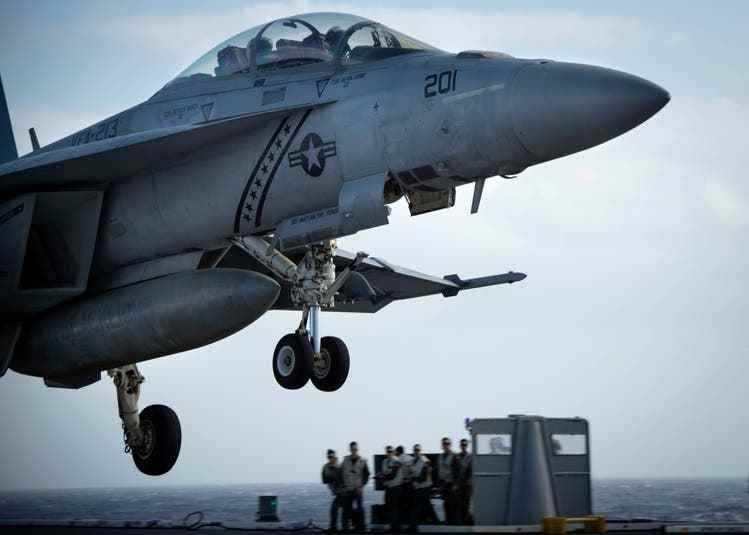
An F/A-18F landing on the most modern aircraft carrier in the USA, the “Gerald R. Ford”.

The aircraft carrier “Gerald R. Ford” underway on the Atlantic Ocean.
Aircraft carriers are more than a warship type for the US. For decades they have been the most visible symbol of American military power and its presence on all seas. During World War II, they were crucial to the rise of the United States, especially in the Pacific Rim. It was enemy aircraft carriers that suddenly forced the United States into the war. On December 7, 1941, more than 350 Japanese fighters, torpedo bombers and dive bombers launched from six aircraft carriers of the Imperial Navy attacked the American naval base at Pearl Harbor.
The far-sighted planner of the attack, Admiral Isoroku Yamamoto, immediately realized that something about this “victory” was stale: none of the three carriers of the American Pacific Fleet were in the Hawaiian port at the time of the attack. On an ocean the size of the Pacific, the aircraft carrier was the primary weapon from day one of the conflict. Yamamoto’s premonitions should be confirmed after just six months. At the Battle of Midway in June 1942, American carrier aircraft sank all four Japanese carriers, losing only one themselves. It was a naval battle with the two opposing fleets separated by several hundred kilometers.
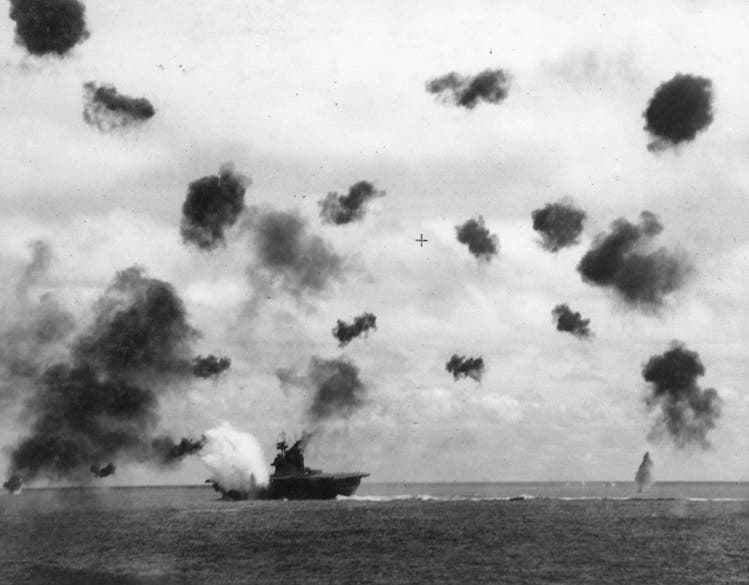
The American carrier Yorktown was sunk in the Battle of Midway in 1942.
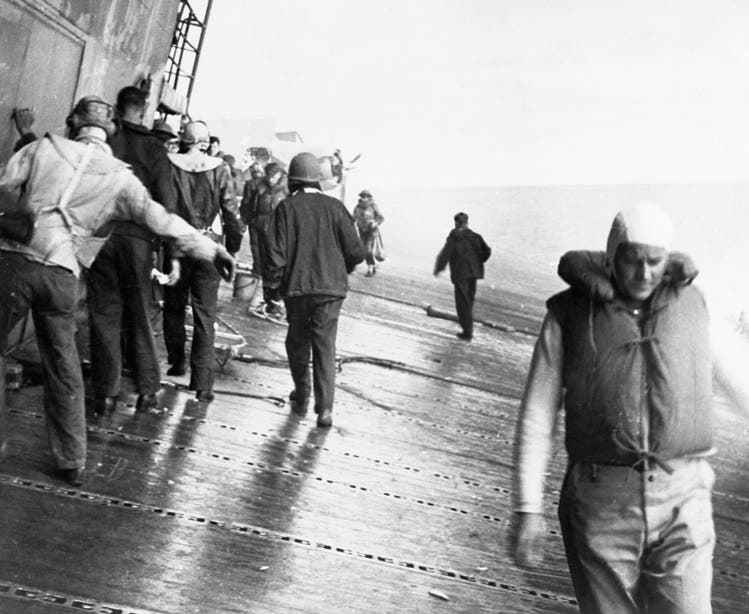
On the deck of the badly hit “Yorktown”: The ship is first bombed by Japanese fighter planes before an enemy torpedo seals its sinking.
The American advance through the Pacific was marked by other battles primarily fought by aircraft carriers, for example at Santa Cruz in October 1942, in the Philippine Sea in June 1944 and in the Gulf of Leyte almost five months later. When the war in the Pacific ended in September 1945, the Navy had 99 aircraft carriers, 71 of which were light escort carriers, which have a separate numbering system. This dominance over any other naval force has not changed to this day. Aircraft carriers played a key role in the Korean, Vietnam, Kuwait and Iraq wars; they were the backbone of brief and commando operations in the Middle East, around Grenada and in numerous other theaters.
Today, the ten gigantic carriers of the Nimitz class and the “Gerald R. Ford” – supplemented by currently nine amphibious assault ships that look very similar to a carrier – have little to compare on the seven seas. The two new carriers of the Royal Navy, the “Queen Elizabeth” and the “Prince of Wales”, with their 65,000 tons displacement and their equipment with F-35s come closest to the American models in terms of combat effectiveness.
Russia has a thirty-year-old carrier, the “Admiral Kuznetsov”, which is prone to failure and has not been operational for a long time. Its sister ship, the former “Varyag”, became the first Chinese aircraft carrier under the name “Liaoning”, to which the first self-built “Shandong” has now been added. In addition, the “Fujian” was launched in China in June. At an estimated 85,000 tons, it comes close to today’s American carriers, but has a conventional drive. For naval planners in Washington there is no doubt who will be the geopolitical rival on the high seas in this century.
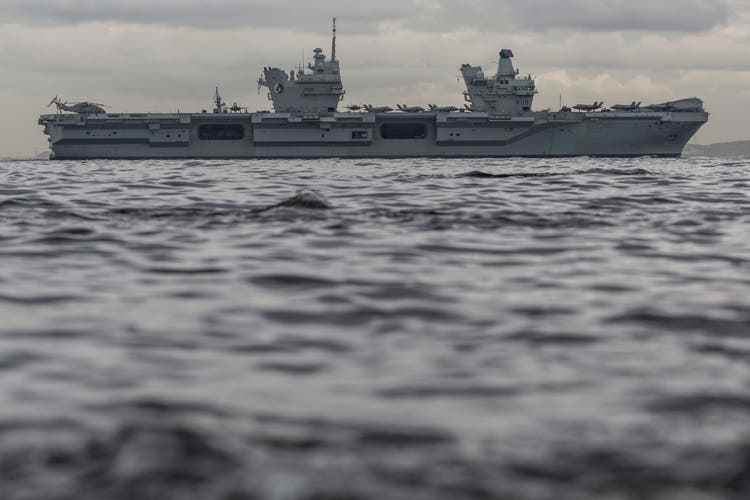
The British carrier “Queen Elizabeth”, which has been operational since 2021, off the coast of Japan.
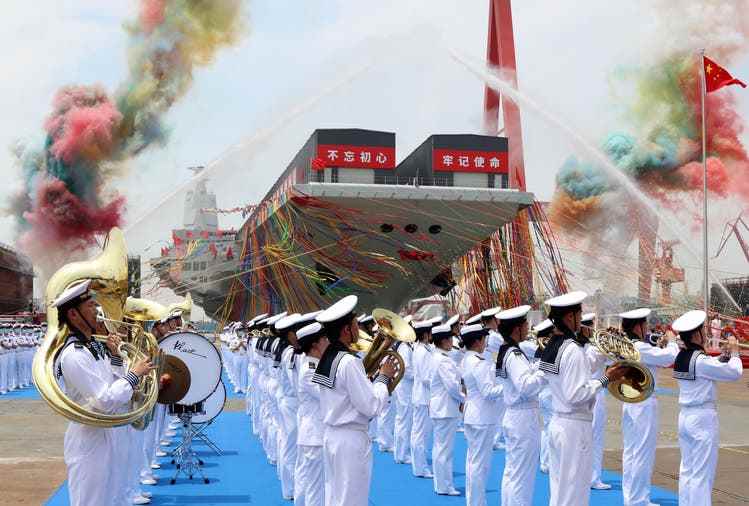
The third Chinese carrier, the “Fujian”, will be launched with a military ceremony in June 2022.
Even if the American aircraft carriers are still unrivaled for a few years, it seems questionable whether they will be able to use their own capacities and those of their escort ships in future conflicts as they have up to now – a carrier battle group still includes at least one cruiser and two destroyers or frigates, mostly but even more units – are adequately protected.
The new Russian hypersonic guided missiles of the Zirkon type, which are supposed to reach a target a thousand kilometers away within six minutes, are described in media reports as a “dread weapon for aircraft carriers”. China is also said to have hypersonic missiles. Just like Beijing’s new J-20 stealth jet, in a region such as the South China Sea with the bases set up by Beijing on disputed islands, they dramatically shorten the warning time for American naval forces and make the giants more vulnerable.
The immense strategic importance of aircraft carriers for America’s claim to world power will also be maintained for the foreseeable future in the second century of this system, which is now beginning. But their use will not be an option everywhere and under all circumstances. For many years, the decision of an American president to relocate a carrier group to a crisis region was seen as an indication of a willingness to intervene, or at least as a threatening gesture. John F. Kennedy sent porters to Cuba, Ronald Reagan to the coast of Lebanon, Bill Clinton to the Horn of Africa. In the war over Ukraine, however, the aircraft carrier is practically not an issue in the discussion about possible Western reactions.
